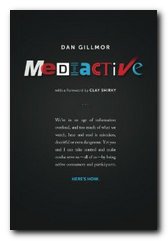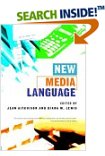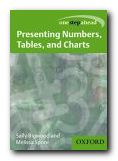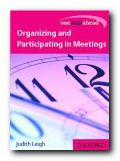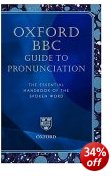conventions, structure, and form of reports
What are scientific reports?
Introduction
The purpose of this guidance note is to explain the criteria for assessment of English language skills in a written report.
1) It outlines the criteria of assessment
2) It summarises what a report is expected to contain
3) It comments on how you can help the reader
1. Criteria for assessment
- Communicative quality: is it easy to read?
- Ideas and organisation: is the information appropriate and clearly organised?
- Grammar and vocabulary: is there a good range of language used so that the meaning is clear and the text is not repetitive?
- Surface features: is the punctuation and spelling accurate?
2. What are scientific reports expected to contain
This section looks at the contents of the report structure, and presentation.
Structure
The structure of a report will normally consist of the following items as
a minimum:
- title
- authors
- abstract
- summary
- table of contents
- body of report
- conclusion
- references
You need to adjust these sections to suit the purpose of the report. But
each section has a particular role, as follows.
The title – tells the reader directly and at first glance what it is that you are discussing.
The abstract or summary and table of contents – gives the reader an overview of the report and a list of section headings. From these, they can see the points included and decide which ones to look at.
The body – consists of the introduction and component sections.
The introduction should state the purpose of the report and show that you are aware of its terms of reference. That is, you should say what the subject is, and what is its purpose. You should also state any method(s) used and any limitations, and finally indicate how the report is structured. It is important to justify, or say why you are writing the report. You should also give the reader a mind map of what is coming.
Sections of the report should be organised under headings. This forces you to classify information and helps you to remain relevant – in case you are likely to wander off the point.
The conclusion – starts by referring back to the purpose of the report, states the main points arising, draws conclusions, and possibly makes recommendations.
References and appendices. These list the material referred to in your work. Follow any guidelines on format for presentation of references. Appendices provide additional material not included in the text.
Layout and presentation
Layout and presentation involves matters ranging from clear title and section headings, to accurate spelling and punctuation. You must think of your reader. Presenting accurate text is equivalent to speaking clearly. Since you are not around to explain any problems to your reader, editing and checking your text is extremely important.
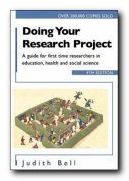 Judith Bell, Doing Your Research Project: A Guide for First-Time Researchers in Education and Social Science, Buckingham: Open University Press (2nd edn) 1993, pp.176. Best-selling UK guide which covers planning and record-keeping, interviewing, reviewing ‘the literature’ of your topic, designing questionnaires, interpreting evidence, and presenting the findings. Each chapter has a summary checklist and its own suggestions for further reading. There’s also a full bibliography and index.
Judith Bell, Doing Your Research Project: A Guide for First-Time Researchers in Education and Social Science, Buckingham: Open University Press (2nd edn) 1993, pp.176. Best-selling UK guide which covers planning and record-keeping, interviewing, reviewing ‘the literature’ of your topic, designing questionnaires, interpreting evidence, and presenting the findings. Each chapter has a summary checklist and its own suggestions for further reading. There’s also a full bibliography and index.
Buy the book from Amazon UK
Buy the book from Amazon US
3. How can you help the reader?
Apart from the points raised above about structure, layout, and presentation, the main tool you have is obviously the language. There are two main points to make: the first is about what we call “signposts”, the second about style.
Signposts
Apart from section headings, you can select language which gives your reader signposts to what you are trying to explain. Signposting helps the person read the text quickly by highlighting the main points and the logic of the argument or discussion. Some examples follow.
1. The first section of your report could start with “The aim of this report…” or “The aim of this project…”
2. Within the first section, the stages could be introduced with “The first stage is…”, “The second stage…”, “This section deals with…”.
3. When you want to give an opinion or evaluate something, you might signpost with “The problem with this is…”, “What is significant about this is…”, “It is important to remember that…”
4. To show that you are drawing a conclusion, introduce the point with “This means that…”, “The result shows that…”, “It is likely that…”
Style
Style means the tone of language you use to address the reader. There are three points to make. You should avoid repetition, avoid a narrative style, and avoid vague language.
Repeat only what is necessary. That is, key words or technical terms. The reader has a memory. To flatter this, you can introduce your repeated point with words like “As mentioned earlier…”, “As discussed above…”
Although it is acceptable to use “I” or “we” in a report, too many sentences with “I” and “we” become repetitive. Avoid: “I had to…” Use: “It was necessary to…”
The reader does not wish to know about everything that happened, but rather your objective assessment of the situation. Avoid: “First we discussed…then we decided…” Use: “The first step was to discuss…It was decided…”
Be precise and be specific. Avoid: “There was a problem so we…” Use: “A problem arose with … which meant it was necessary to…”
Conclusion and recommendations
Read over what you have written and check it against the guidelines. Pay particular attention to punctuation and spelling.
With thanks to Esther Daborn
© Roy Johnson 2004
More on How-To
More on literary studies
More on writing skills

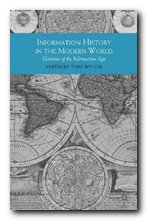
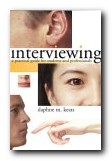
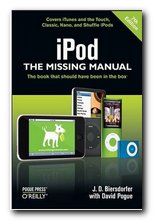
 And nothing can go drastically wrong, so you don’t need to worry. It’s no wonder that these devices have become so popular so quickly. Quite apart from the ultra-cool design, you can download games, extras, and software novelties with no trouble at all. Many of them are completely free or amazingly cheap. For instance, the ‘Brushes’ graphic design program used to produce
And nothing can go drastically wrong, so you don’t need to worry. It’s no wonder that these devices have become so popular so quickly. Quite apart from the ultra-cool design, you can download games, extras, and software novelties with no trouble at all. Many of them are completely free or amazingly cheap. For instance, the ‘Brushes’ graphic design program used to produce 